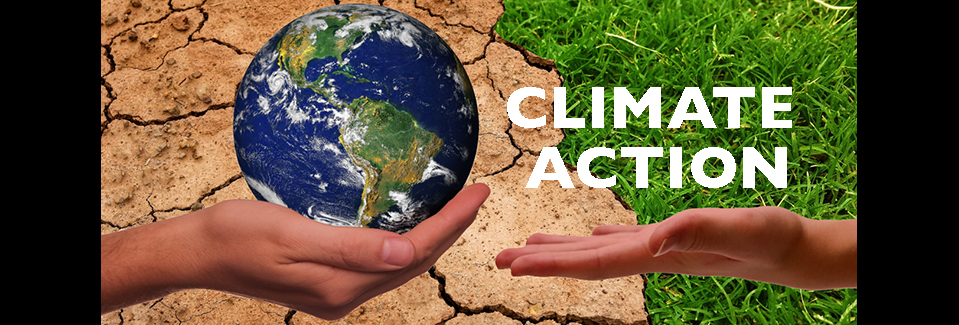Environmental Stewardship: #1 – Be informed
Did you know the church has a library? I didn’t. Not sure how I walked past that door all these years and didn’t look in, but now that I know, I will be using it!
Several excellent books on the environment have recently been donated. Here’s the publishers’ description for each. Check them out (literally and figuratively)! They are all very helpful in providing actions you can take, or encourage your local community, state and federal government to take to help halt and maybe even reverse global warming.
Drawdown: The Most Comprehensive Plan Ever Proposed to Reverse Global Warming
by Paul Hawken (Author, Editor), Tom Steyer (Foreword)
The 100 most substantive solutions to reverse global warming, based on meticulous research by leading scientists and policymakers around the world.
In the face of widespread fear and apathy, an international coalition of researchers, professionals, and scientists have come together to offer a set of realistic and bold solutions to climate change. One hundred techniques and practices are described here—some are well known; some you may have never heard of. They range from clean energy to educating girls in lower-income countries to land use practices that pull carbon out of the air. The solutions exist, are economically viable, and communities throughout the world are currently enacting them with skill and determination. If deployed collectively on a global scale over the next thirty years, they represent a credible path forward, not just to slow the earth’s warming but to reach drawdown, that point in time when greenhouse gases in the atmosphere peak and begin to decline. These measures promise cascading benefits to human health, security, prosperity, and well-being—giving us every reason to see this planetary crisis as an opportunity to create a just and livable world.
50 Simple Steps to Save the Earth from Global Warming
by The Green Patriot Working Group (Author)
Today, many Americans are concerned about global warming. According to a March 2007 MSNBC poll, 86% of Americans believe global warming is a critical or important threat, and according to an April 2007 ABC News/The Washington Post/Stanford University poll, 80% of Americans say they are willing to make changes in their lives to help the environment. This guide of 50 practical steps is a positive presentation of a serious subject organized in a fun, easy-to-read format. Each step is a simple way you can help in the fight against global warming and feel good about being part of the solution to the current environmental crisis. Sample steps include: Determine Your Carbon Footprint • Buy Green Energy • Plant a Rooftop Garden • Take an Eco-Vacation • Check Your Tire Pressure • Compost Food Waste • Recycle Your Shoes • Use Petrochemical-Free Cosmetics• Buy Local Foods • Wear Organic Clothing • Go Vegetarian for a Day • Invest in the Solution.
How to Be a Conscious Eater: Making Food Choices That Are Good for You, Others, and the Planet
by Sophie Egan
Is organic really worth it? Are eggs ok to eat? If so, which ones are best for you, and for the chicken—Cage-Free, Free-Range, Pasture-Raised? What about farmed salmon, soy milk, sugar, gluten, fermented foods, coconut oil, almonds? Thumbs-up, thumbs-down, or somewhere in between?
Using three criteria—Is it good for me? Is it good for others? Is it good for the planet?—Sophie Egan helps us navigate the bewildering world of food so that we can all become conscious eaters. To eat consciously is not about diets, fads, or hard-and-fast rules. It’s about having straightforward, accurate information to make smart, thoughtful choices amid the chaos of conflicting news and marketing hype. An expert on food’s impact on human and environmental health, Egan offers bottom-line answers to your most top-of-mind questions about what to eat.
How to Prepare for Climate Change: A Practical Guide to Surviving the Chaos
by David Pogue
In How to Prepare for Climate Change, bestselling self-help author David Pogue offers sensible, deeply researched advice for how the rest of us should start to ready ourselves for the years ahead. Pogue walks readers through what to grow, what to eat, how to build, how to insure, where to invest, how to prepare your children and pets, and even where to consider relocating when the time comes. (Two areas of the country, in particular, have the requisite cool temperatures, good hospitals, reliable access to water, and resilient infrastructure to serve as climate havens in the years ahead.) He also provides wise tips for managing your anxiety, as well as action plans for riding out every climate catastrophe, from superstorms and wildfires to ticks and epidemics.
Timely and enlightening, How to Prepare for Climate Change is an indispensable guide for anyone who read The Uninhabitable Earth or The Sixth Extinction and wants to know how to make smart choices for the upheaval ahead.
| WINNER OF THE PULITZER PRIZE
ONE OF THE NEW YORK TIMES BOOK REVIEW’S
10 BEST BOOKS OF THE YEAR
A NEW YORK TIMES BESTSELLER
A NATIONAL BOOK CRITICS CIRCLE AWARD FINALIST |
The Sixth Extinction: An Unnatural History
by Elizabeth Kolbert
Over the last half-billion years, there have been Five mass extinctions, when the diversity of life on earth suddenly and dramatically contracted. Scientists around the world are currently monitoring the sixth extinction, predicted to be the most devastating extinction event since the asteroid impact that wiped out the dinosaurs. This time around, the cataclysm is us.
In prose that is at once frank, entertaining, and deeply informed, New Yorker writer Elizabeth Kolbert tells us why and how human beings have altered life on the planet in a way no species has before. Interweaving research in half a dozen disciplines, descriptions of the fascinating species that have already been lost, and the history of extinction as a concept, Kolbert provides a moving and comprehensive account of the disappearances occurring before our very eyes. She shows that the sixth extinction is likely to be mankind’s most lasting legacy, compelling us to rethink the fundamental question of what it means to be human.
Nature’s Best Hope: A New Approach to Conservation That Starts in Your Yard
by Douglas W. Tallamy
Douglas W. Tallamy’s first book, Bringing Nature Home, awakened thousands of readers to an urgent situation: wildlife populations are in decline because the native plants they depend on are fast disappearing. His solution? Plant more natives. In this new book, Tallamy takes the next step and outlines his vision for a grassroots approach to conservation. Nature’s Best Hope shows how homeowners everywhere can turn their yards into conservation corridors that provide wildlife habitats. Because this approach relies on the initiatives of private individuals, it is immune from the whims of government policy. Even more important, it’s practical, effective, and easy—you will walk away with specific suggestions you can incorporate into your own yard.
If you’re concerned about doing something good for the environment, Nature’s Best Hope is the blueprint you need. By acting now, you can help preserve our precious wildlife—and the planet—for future generations.
Active Hope: How to Face the Mess We’re in without Going Crazy
by Joanna Macy
The challenges we face can be difficult even to think about. Climate change, the depletion of oil, economic upheaval, and mass extinction together create a planetary emergency of overwhelming proportions. Active Hope shows us how to strengthen our capacity to face this crisis so that we can respond with unexpected resilience and creative power. Drawing on decades of teaching an empowerment approach known as the Work That Reconnects, the authors guide us through a transformational process informed by mythic journeys, modern psychology, spirituality, and holistic science. This process equips us with tools to face the mess we’re in and play our role in the collective transition, or Great Turning, to a life-sustaining society.
 This page is a reservoir of hope and action in the face of a changing world. Look here for ideas to re-shape your own life, or our life in community, in ways that will help us all reduce our carbon footprint. The entries posted here are part of the work of Queen Anne Lutheran’s Environmental Stewardship and Faith Group, an ad hoc team of people interested in how we as a community of faith and as individuals can respond to the climate crisis unfolding in our world.
This page is a reservoir of hope and action in the face of a changing world. Look here for ideas to re-shape your own life, or our life in community, in ways that will help us all reduce our carbon footprint. The entries posted here are part of the work of Queen Anne Lutheran’s Environmental Stewardship and Faith Group, an ad hoc team of people interested in how we as a community of faith and as individuals can respond to the climate crisis unfolding in our world.
